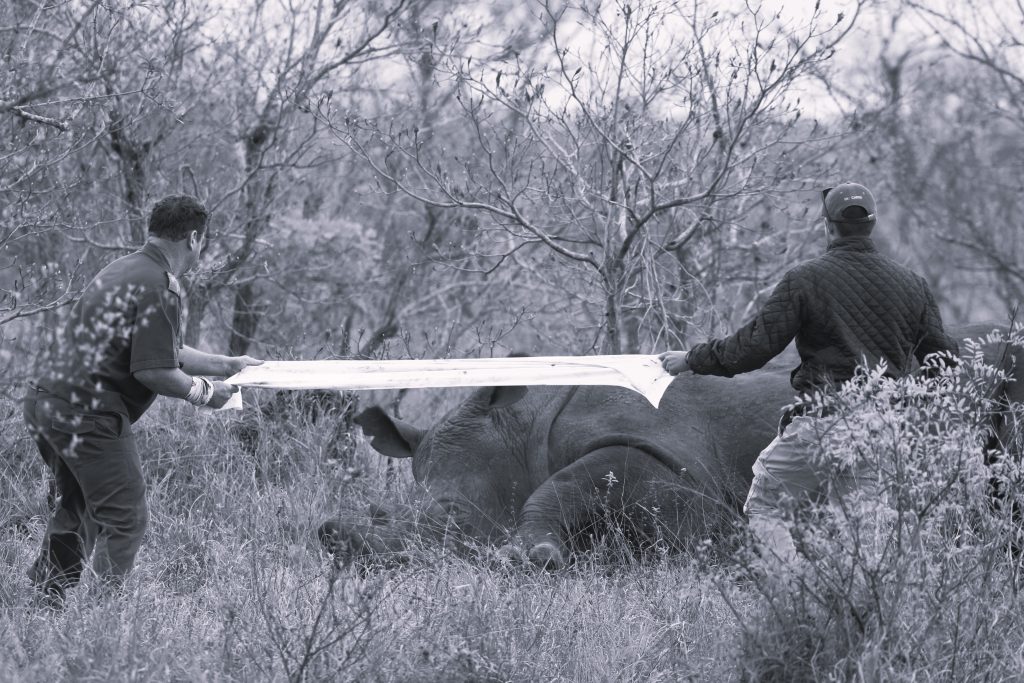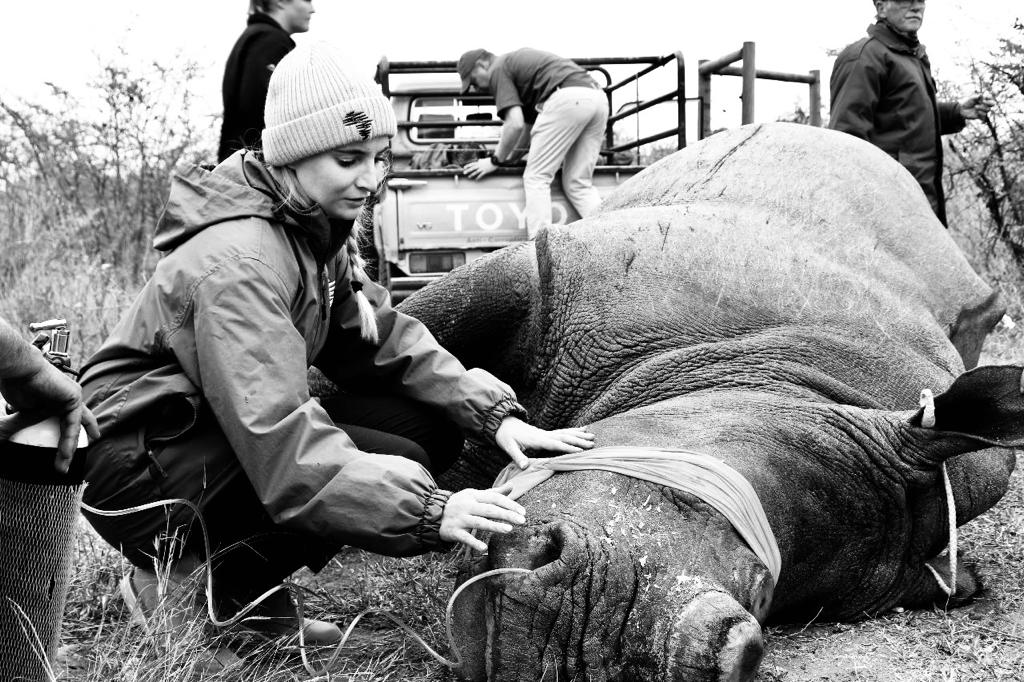News
Rhino Dehorning with African Wildlife Vets: A Desperate Measure Against Poaching
Author: Mia Hordyk
Rhino dehorning is one of many conservation efforts aimed at protecting endangered species, and is often performed as a last resort, when all other measures of protection against poaching have been exhausted. With rhino poaching on the rise in South Africa, wildlife vets and conservationists have had to turn to dehorning to mitigate the threat that poaching poses on the country’s rhino population. Providing assistance in the form of pharmaceuticals, equipment, and veterinary support, African Wildlife Vets plays a crucial role in ensuring that these operations are completed successfully.

Steps In The Dehorning Process
- The rhino is darted from a helicopter. Darting from the air, as opposed to on land, is the preferred method, as it allows the pilot and vet to track the darted animal and get to it quickly after it is immobilised.
- Once the rhino is immobilised, a blind fold is placed over its eyes and ear-plugs put in its ears to reduce any visual or auditory stimuli that could cause stress to the animal.
- The wildlife vet on the scene administers a partial antidote intravenously to mitigate some of the side effects caused by the potent opioid used for immobilisation.
- With the rhino well protected against visual and auditory stimuli, both horns are trimmed using a chainsaw, which is the quickest and most effective method. The horns are made of keratin, which is the same protein that makes up hair and fingernails. Trimming the horns can be compared to cutting your hair or fingernails, so you can rest easy knowing that it does not cause any pain to the rhino.
- Once the horns are trimmed, a pure antidote is administered, which leads to a complete reversal of the immobilising drug. Vets on the scene monitor the animal from a safe distance to ensure that the animal makes a full recovery.
- Just as your hair and nails need a trim every once in a while, the dehorning process will need to be repeated once there has been some regrowth, which typically occurs after approximately 18 months.
Rhino dehorning is a complicated and costly procedure that requires collaboration among various organisations. This is where African Wildlife Vets comes in. We work alongside state parks, like Ezemvelo KwaZulu-Natal Wildlife (EKZNW) and Mpumalanga Tourism and Parks Agency (MTPA), to address the complex challenges of rhino poaching. Where necessary, we provide aid in the form of veterinary support, pharmaceuticals and equipment needed to complete these critical dehorning operations efficiently and effectively.
So, what can you do? Support African Wildlife Vets in their mission to protect rhinos and other endangered species by donating today. Your contribution can make a real difference in the fight against poaching. Together, we can ensure a future where rhinos are safe to roam free, horn or no horn.

